ABSTRACT
As we move into the anthropogenic age, it is indispensable to look for solutions in nature and learn from them rather than exploit the little that we have left. We are in desperate need for bio receptive architecture embedded with water storage and absorption strategies. Cacti are a great paradigms of how a plant water management mechanism could help adapt to drought and arid conditions. Epiphytic Tessellations aims at developing an architecturally applicable system with qualities indifferent to that of the cacti. The pods are generated by depositing mixtures of the super absorbent Sodium Polyacrylate within the pockets of the components, guided by the structure of the tessellated geometries. This approach explores the capacity of the units to absorb water and serve as a support structure for epiphytic plants. The intent is not solely to develop a biocompatible system that enables the growth of plants, but one that’s also has the potential to store water and serve as a cooling system, while replenishing our lungs. Deploying this system in the ventilation shafts of buildings can serve as an ecological lifeline to our cities, especially those with tremendous heat.
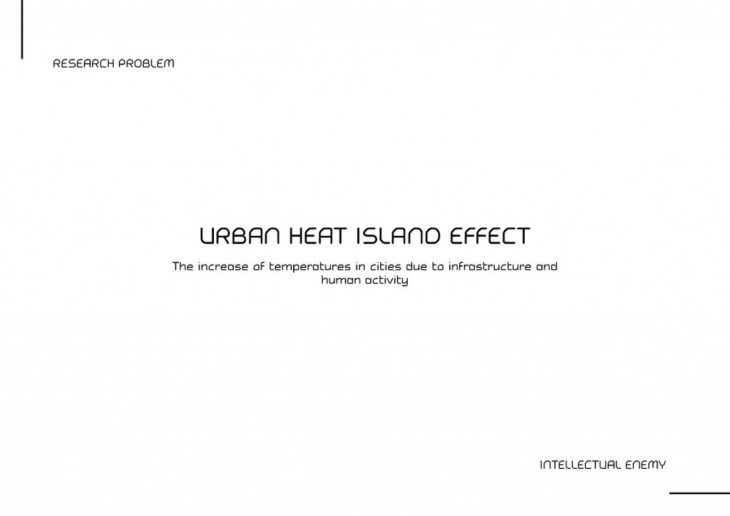
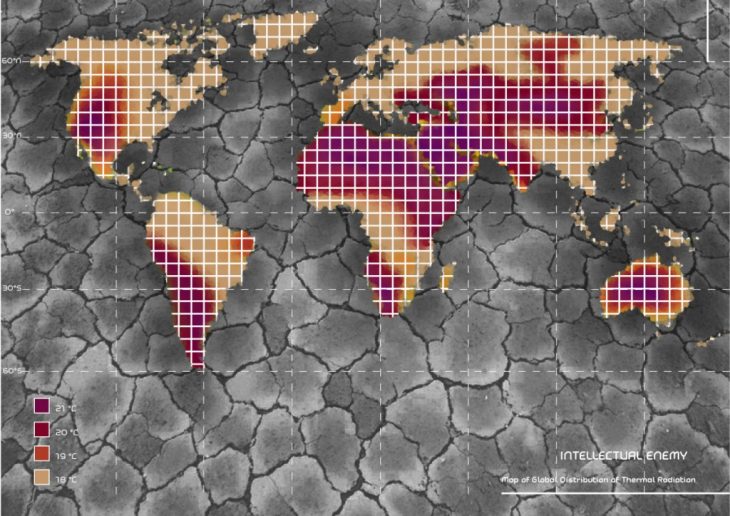
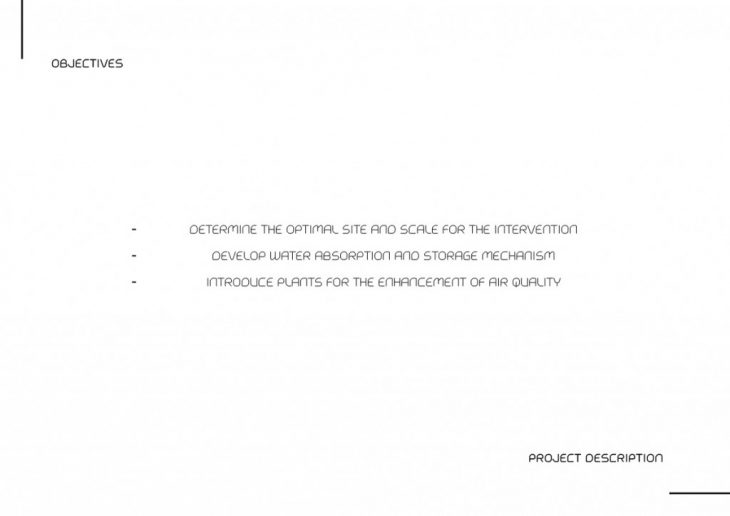
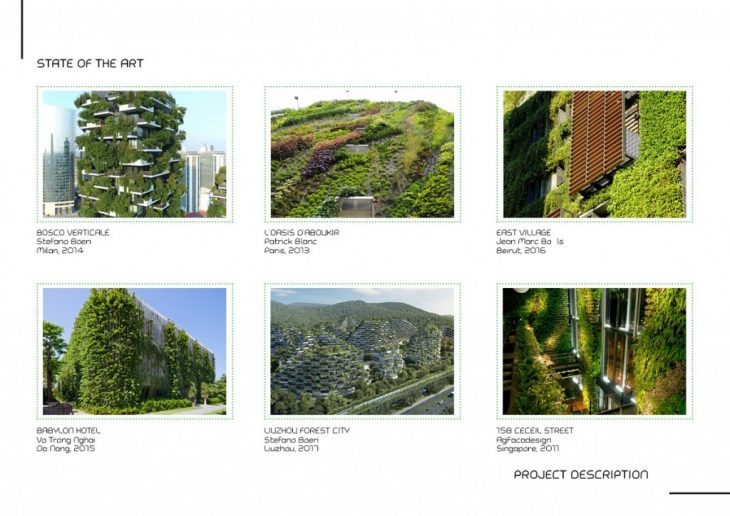
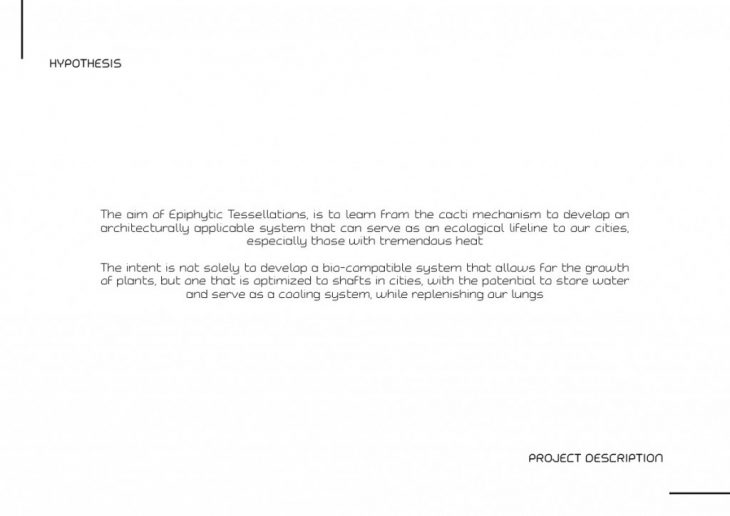
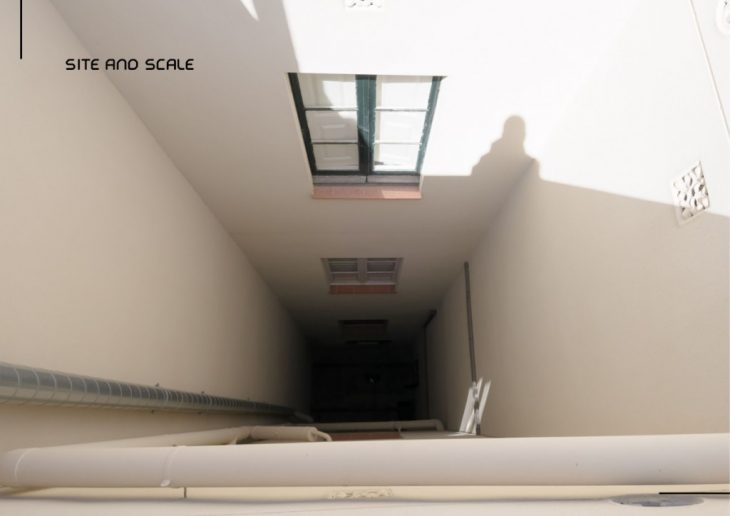
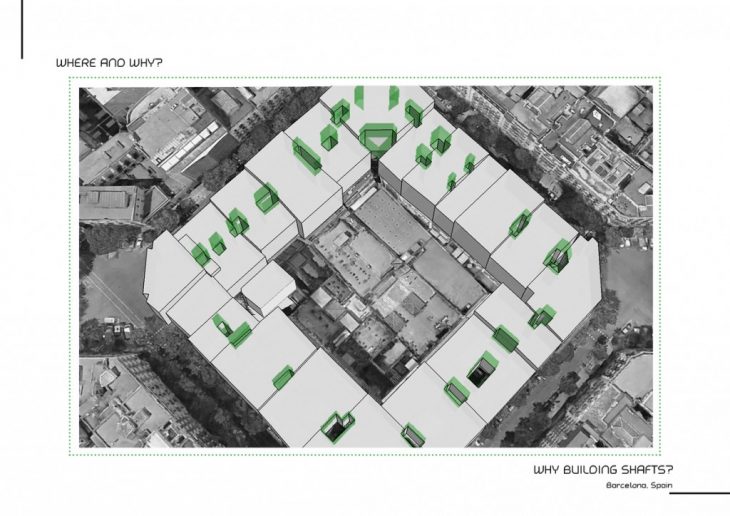
This project proposes the introduction of epiphytic plants into the shafts of buildings in cities of arid regions of the world. Ventilation shafts are well distributed around cities but aren’t quite being used for ventilation due to various reasons.
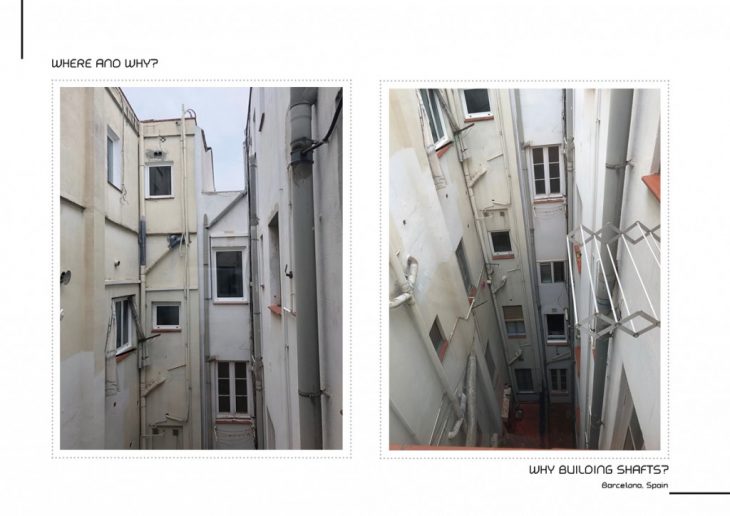
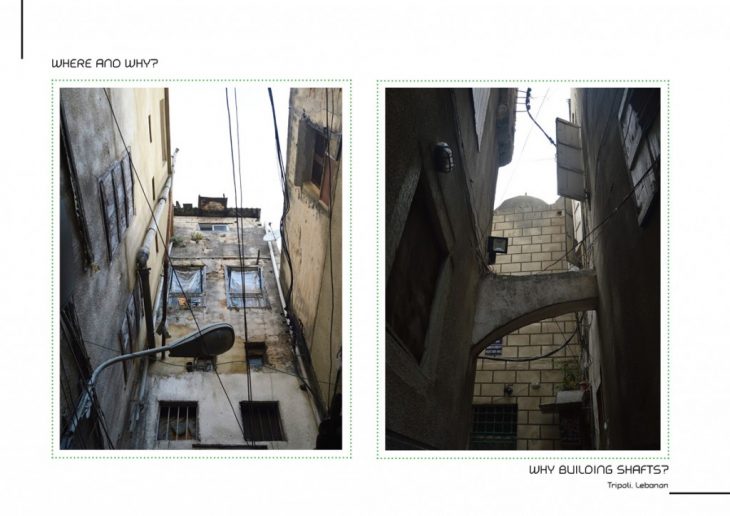
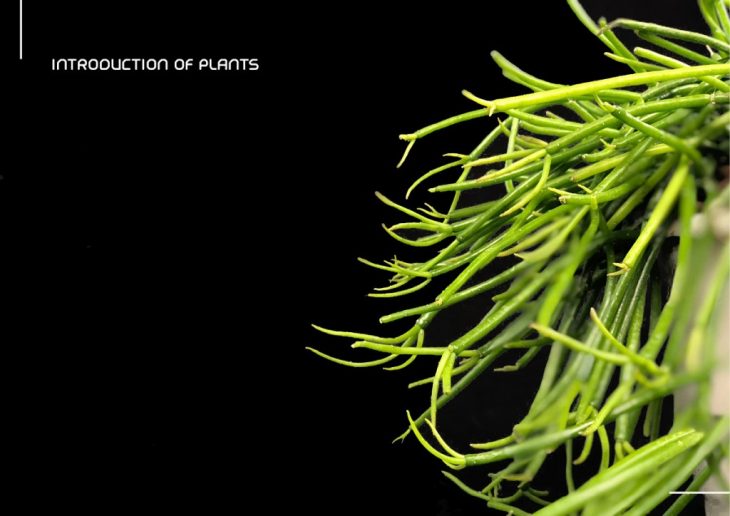
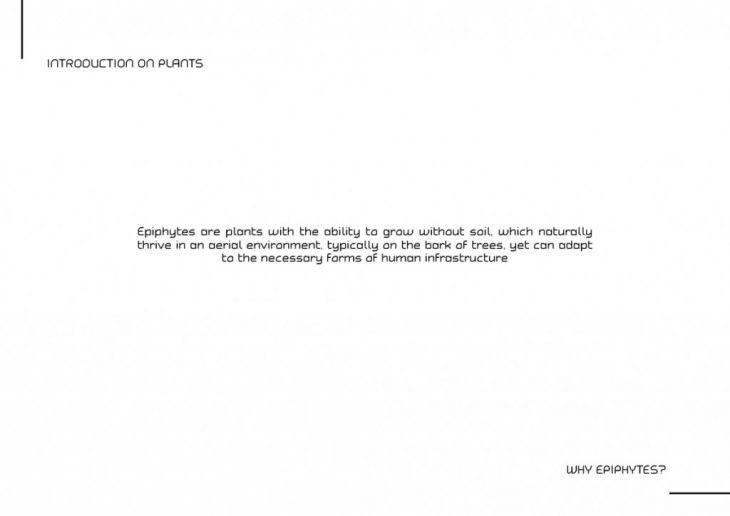
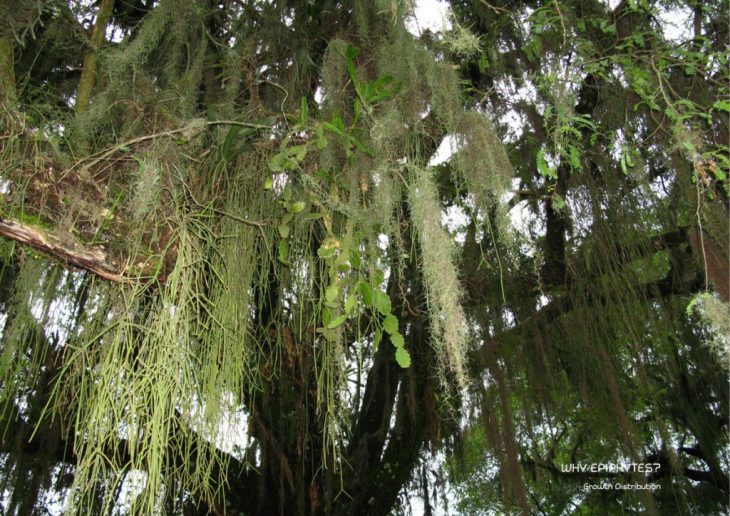
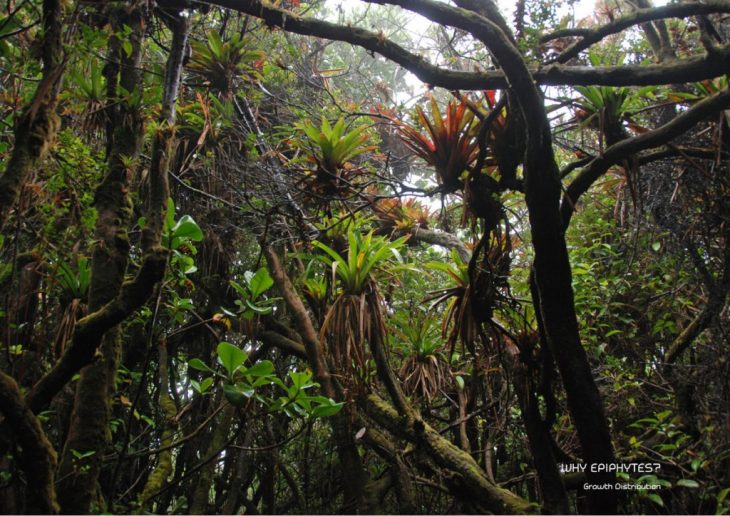
Epiphytes are plants, which like a parasite grows on a host but unlike parasites, they take no nutrients from the host itself. They rely on nutrients from the air, falling rain, and compost. The host only serves as a support. They adapt to harsh conditions, especially serious lack of water and shortage of minerals and nutrients. They either have thick stems that store water and nutrients or leaf-hairs to close their stomata when its dry.
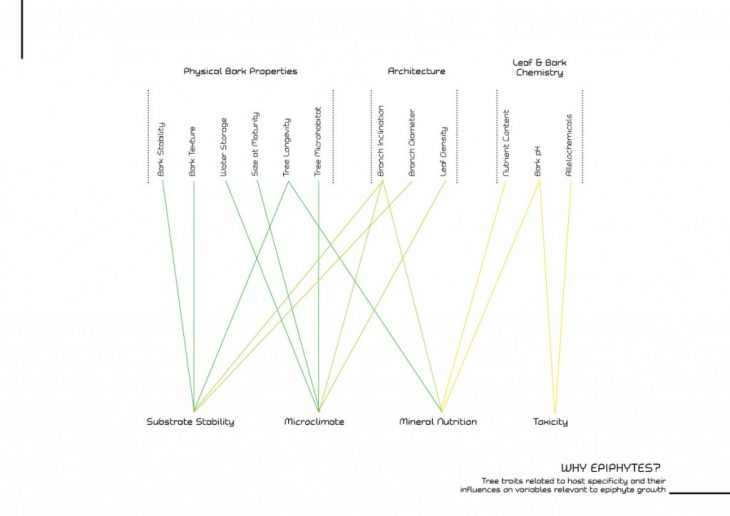
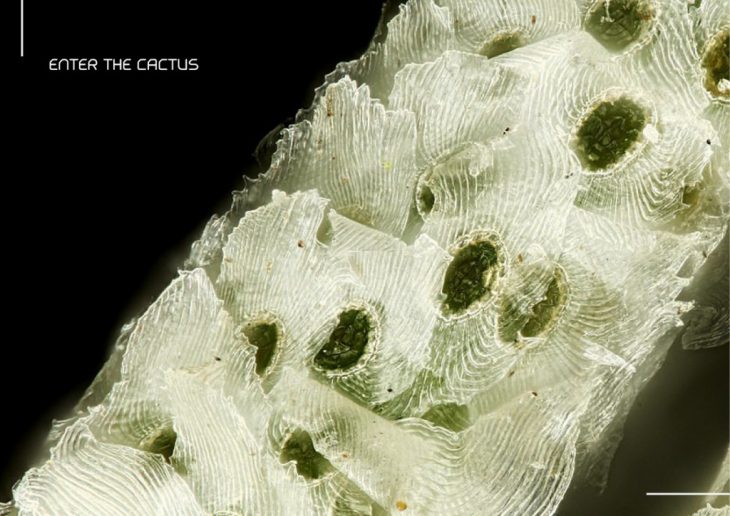
Cacti in arid regions of the world have a developed fundamental water management systems, such as water collection through spines, water absorption through trichome, and water storage using mucilage. The water collection method of cactus is well-documented, but its water absorption and storage strategies remain to be elucidated. Consequently, this project emulates cactus mucilage absorption and storage system by using advanced super absorbent polymer with natural binders on a structural system to mimic the water management of cacti. 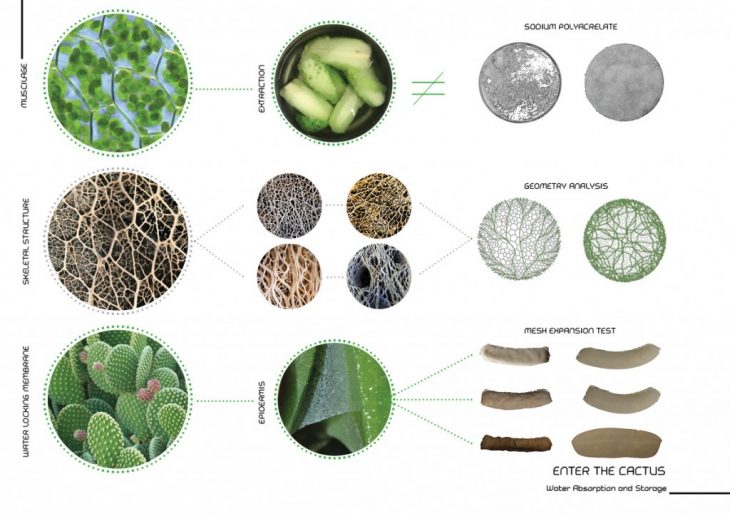
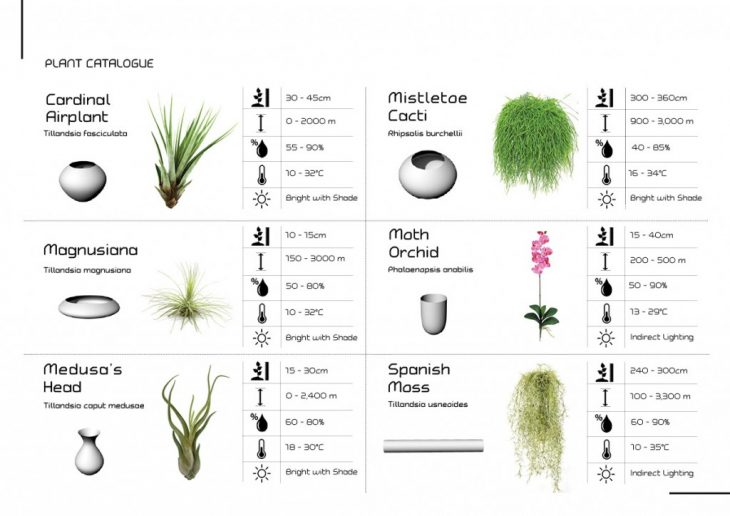
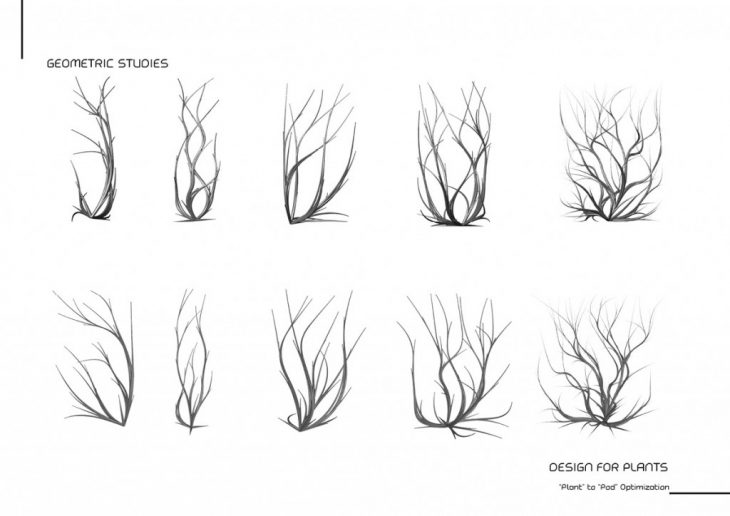
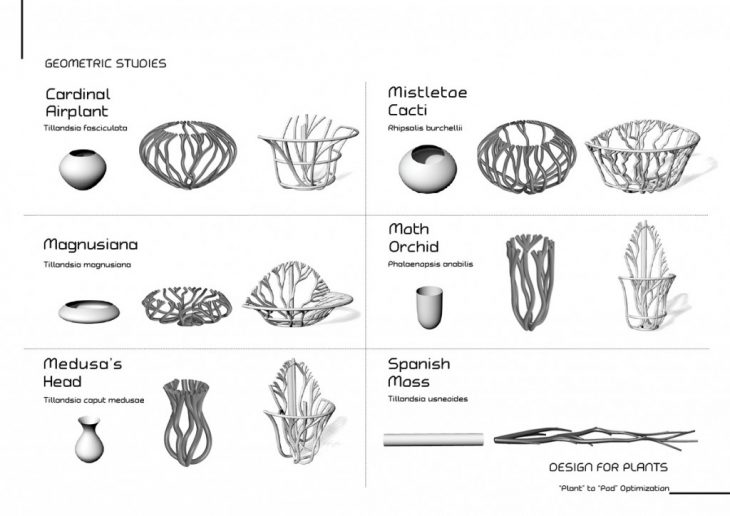
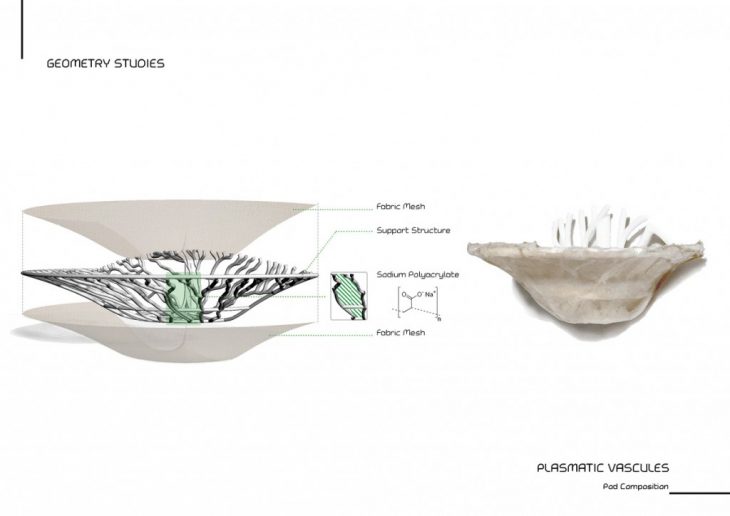
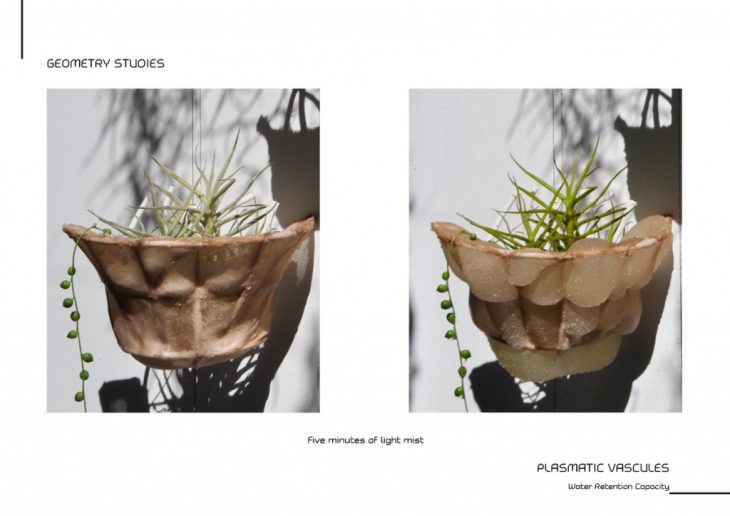
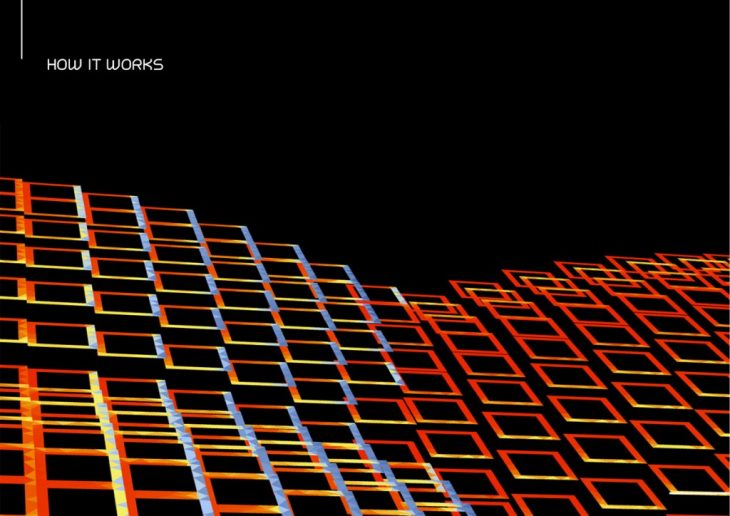
The use of computational software allows to optimize the height- based distribution of solar radiation of along the facades of shafts. With a clear view into the heat distribution and a look into the Epiphyte Plant Database assists at portraying what plant should be placed where, as different species of plants require different levels of humidity and solar radiation.
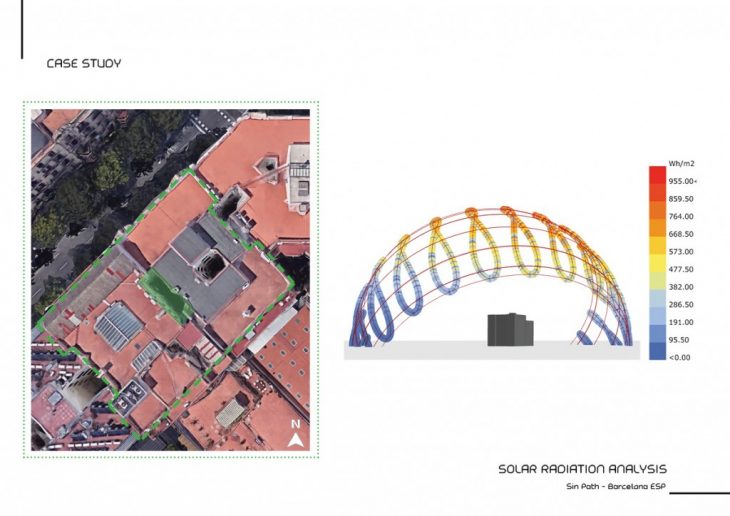
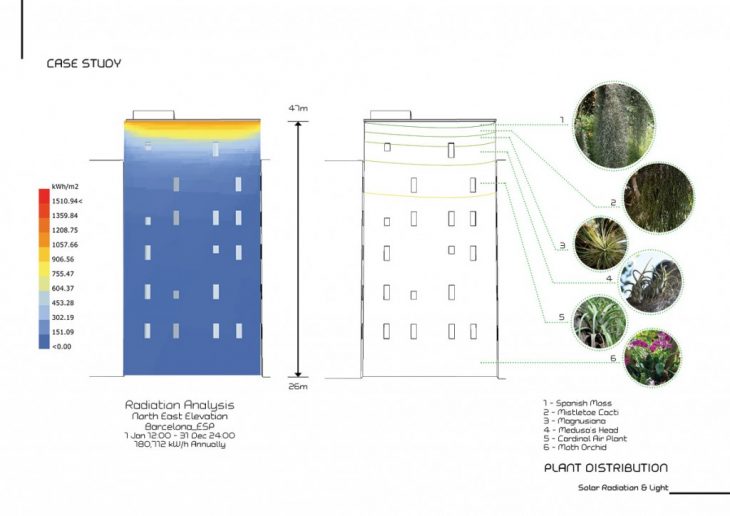
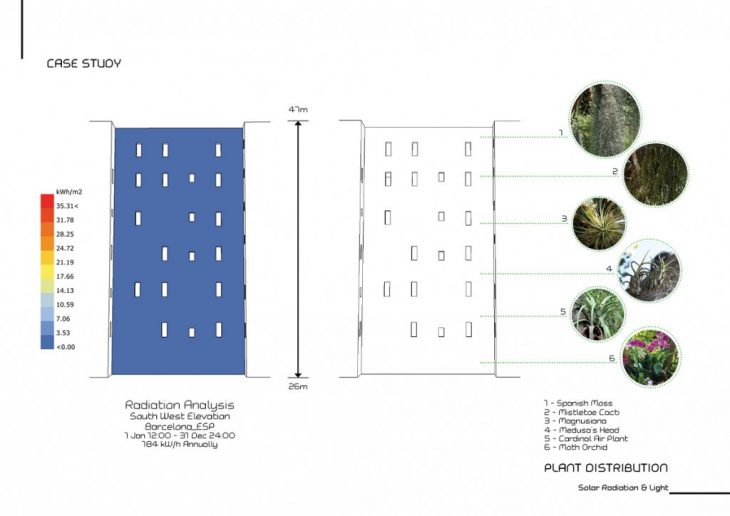
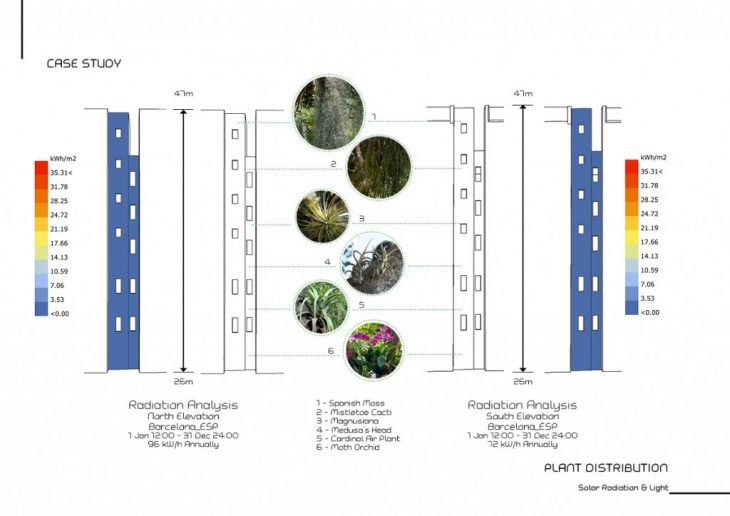
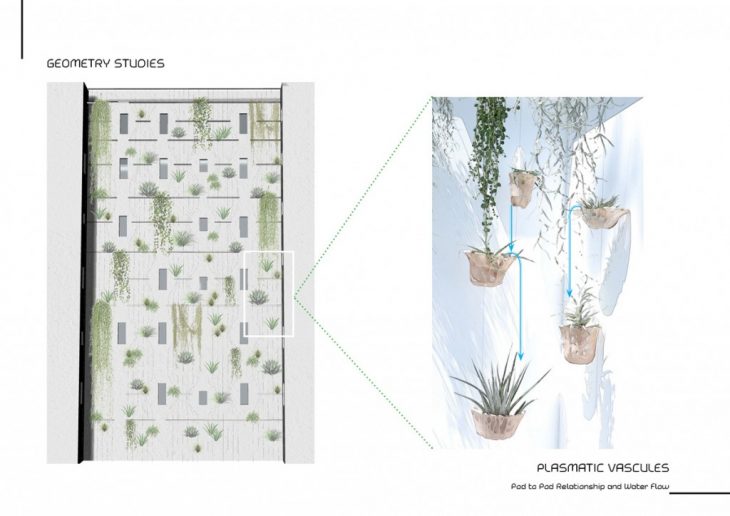
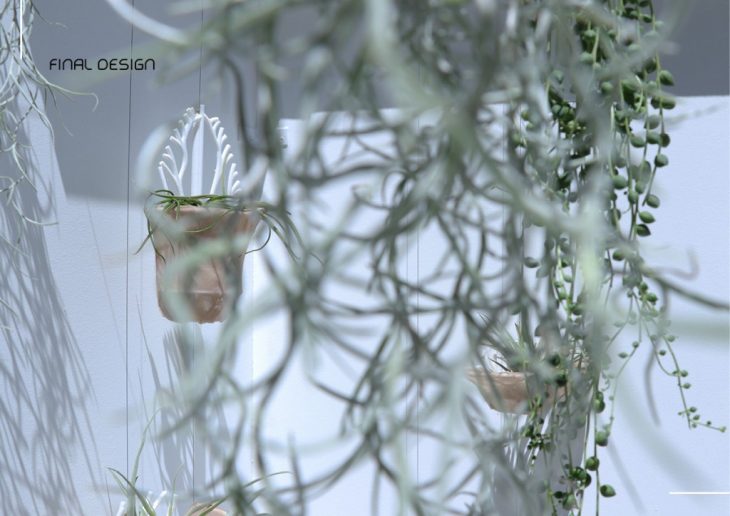
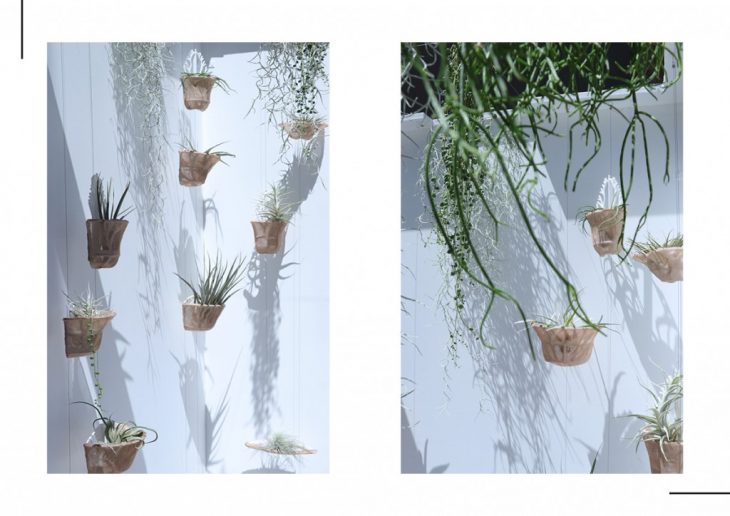
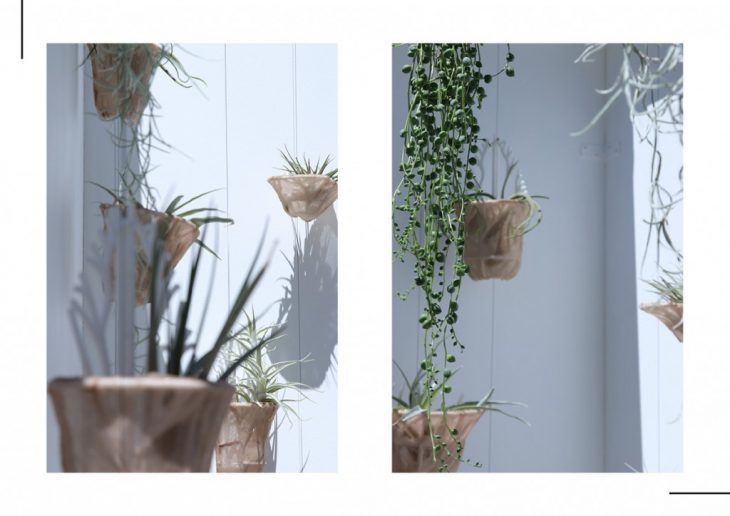
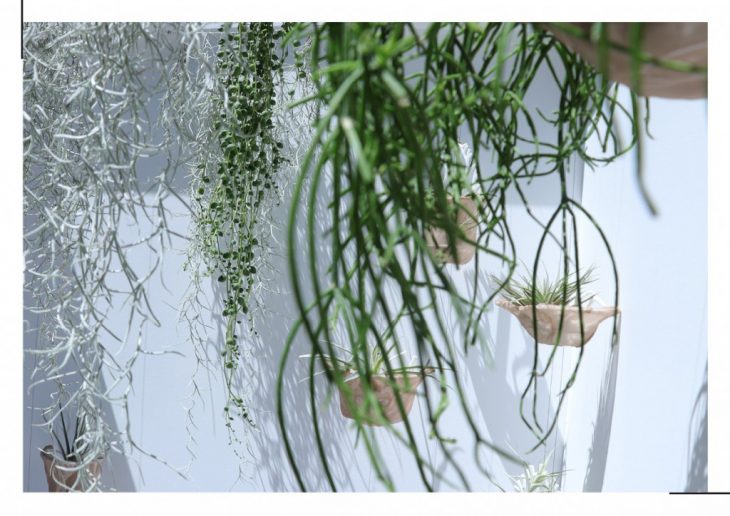
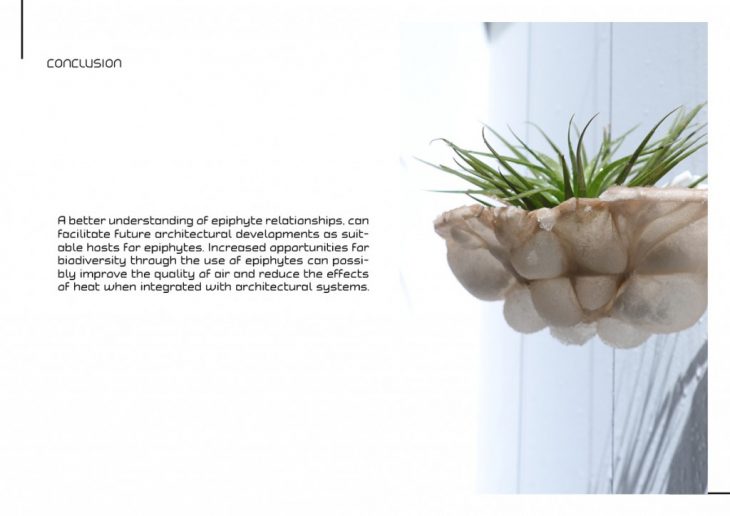
This paper proposes a new bio-inspired technique for water collection based on information about the water management strategies of cactus. This study discusses the underlying water absorption and storage strategies of cactus and provides the experimental database required to develop a biomimetic water management device with the use of acry-polymers. Along with digital computation and fabrication tools, there is a better understanding of how these architectural systems could possibly be built and where they could be set to achieve substantial results. It emphasizes on the water absorption and storage strategies of cactus and provides the experimental database required to develop a biomimetic water management device that could be used on building facades and specifically in shafts where heat island effect exists; as the placement within shafts proves a greater impact in cities.
Epiphytic Tessellations is a thesis project of IaaC, Institute for Advanced Architecture of Catalonia.
Developed at Master in Advanced Architecture, in 2017/2018 by Antoinette El Chidiac
Tutor: Marcos Cruz
Design Project Studio | C Biom A